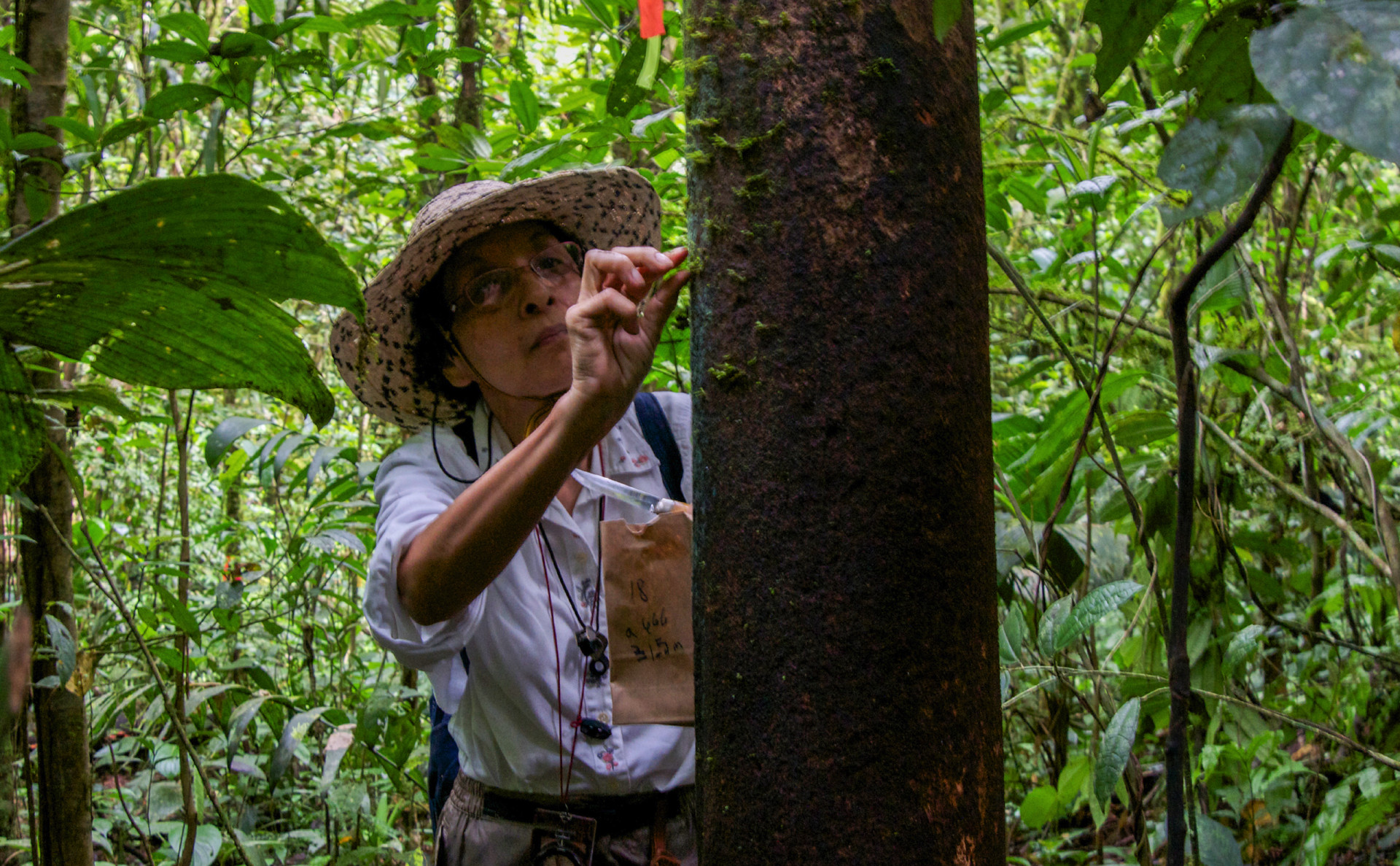Profile: Noris Salazar
Bryophyte diversity in El Copé
El Copé National Park, Panama
A Smithsonian research heads into the remote mountains of a Panamanian national park to catalogue the tiniest of plant species.
On a clear day, both the Atlantic and Pacific oceans are visible from Mt. Calvario in Panama’s Omar Torrijos National Park. But often the red clay road up the hill disappears into misty whiteness, obscuring all ocean views. Noris Salazar-Allen, STRI staff scientist, is here to collect bryophytes — tiny hornworts, mosses and liverworts — thriving in this cool climate punctuated by violent storms.
Salazar was the first researcher in Panama to specialize in the study of bryophytes. She founded the Bryophytes and Lichens section of the University of Panama’s herbarium more than 35 years ago, growing the collection from some 50 specimens to over 10,000. On July 19, she won the prestigious Riclef Grolle Award for Excellence in Bryodiversity Research at the International Association of Bryologists’ meeting in London. The prize is given to researchers who contribute significantly to the knowledge of bryophytes, some of which descended from the first land plants to evolve 400 million years ago.
With students and colleagues from the University of Panama, the Universidad Autónoma de Chiriquí and Panama’s Environmental Authority, ANAM, she’s censusing bryophytes in a long-term forest dynamics plot set up as part of the Panamanian Mesoamerican Corridor of the Atlantic II (CBMAP II) and STRI’s ForestGEO group.
